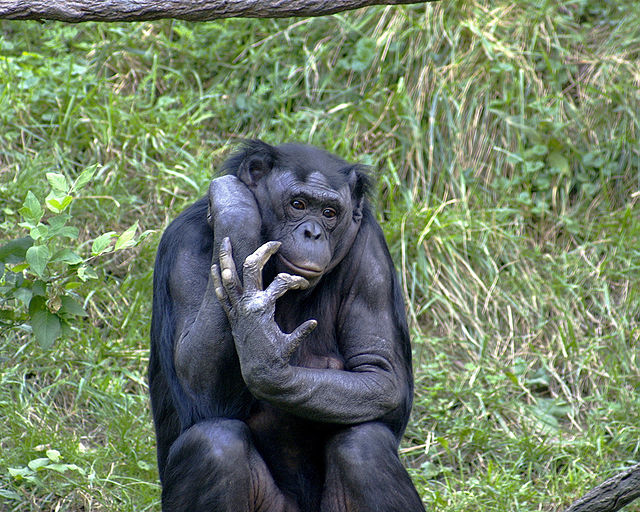The genus Pan consists of two extant species: the chimpanzee and the bonobo. Taxonomically, these two ape species are collectively termed panins. The two species were formerly collectively called "chimpanzees" or "chimps"; if bonobos were recognized as a separate group at all, they were referred to as "pygmy" or "gracile chimpanzees". Together with humans, gorillas, and orangutans they are part of the family Hominidae. Native to sub-Saharan Africa, chimpanzees and bonobos are currently both found in the Congo jungle, while only the chimpanzee is also found further north in West Africa. Both species are listed as endangered on the IUCN Red List of Threatened Species, and in 2017 the Convention on Migratory Species selected the chimpanzee for special protection.
Pan (genus)
Chimpanzee (Pan troglodytes) (left) and bonobo (Pan paniscus) (right)
Bonobo
Common chimpanzees in Gombe Stream National Park
The chimpanzee, also simply known as the chimp, is a species of great ape native to the forests and savannahs of tropical Africa. It has four confirmed subspecies and a fifth proposed one. When its close relative the bonobo was more commonly known as the pygmy chimpanzee, this species was often called the common chimpanzee or the robust chimpanzee. The chimpanzee and the bonobo are the only species in the genus Pan. Evidence from fossils and DNA sequencing shows that Pan is a sister taxon to the human lineage and is thus humans' closest living relative. The chimpanzee is covered in coarse black hair, but has a bare face, fingers, toes, palms of the hands, and soles of the feet. It is larger and more robust than the bonobo, weighing 40–70 kg (88–154 lb) for males and 27–50 kg (60–110 lb) for females and standing 150 cm.
Chimpanzee
Skeleton
Chimpanzee hand (left) compared to human hand
Overnight nest in a tree








